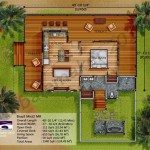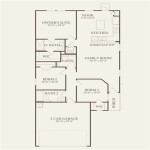Essential Aspects of Large Wooden Bird House Plans
Birdhouses provide shelter and nesting sites for a variety of avian species, encouraging their presence in gardens and urban areas. Creating a large wooden birdhouse involves careful planning and execution to ensure the well-being and comfort of the birds. Here are some essential aspects to consider when designing and building a large wooden birdhouse:
1. Size and Dimensions
The size of the birdhouse should be appropriate for the target species. Larger bird species require more space for nesting, roosting, and raising their young. Consider the average size of the birds you want to attract and adjust the dimensions accordingly. A general guideline for large birdhouses is a floor area of at least 12x12 inches and a height of 18-24 inches.
2. Location and Placement
The location of the birdhouse is crucial for its success. Place the birdhouse in a quiet and undisturbed area, away from potential predators and loud noises. Choose a spot with morning sun exposure to provide warmth for the birds, while also ensuring shade during the hottest hours of the day. Mount the birdhouse securely on a post, tree branch, or wall, at a height of 5-10 feet above the ground.
3. Entrance Hole
The size and shape of the entrance hole are critical for the specific bird species you want to attract. Different species have different beak sizes and preferences. Research the entrance hole size for your target species and make sure it is large enough for the birds to enter and exit comfortably, but small enough to prevent predators from entering.
4. Ventilation and Drainage
Proper ventilation is essential to prevent moisture buildup and respiratory issues in birds. Drill small holes or create ventilation slots in the walls of the birdhouse to allow for airflow. Additionally, ensure that the birdhouse has adequate drainage by providing a slightly sloped roof or holes in the floor to drain rainwater.
5. Predator Protection
Keep birds safe from predators by incorporating design elements that discourage predators. Avoid placing the birdhouse near dense vegetation or low-hanging branches that could provide access to predators. Install a predator guard, such as a metal cone or baffle, around the base of the post or tree branch where the birdhouse is mounted.
6. Materials and Construction
Use durable and weather-resistant materials to construct the birdhouse. Cedar, redwood, and cypress are popular choices for outdoor birdhouses due to their natural resistance to rot and decay. Seal the wood with a non-toxic and bird-safe paint or finish to protect it from the elements and extend its lifespan.
7. Cleaning and Maintenance
Regular cleaning is essential to maintain hygiene and prevent the spread of diseases. Remove old nesting material and debris from the birdhouse every fall and spring. Use hot water and a mild disinfectant to clean the interior and exterior surfaces. Allow the birdhouse to dry completely before replacing it in its location.
By incorporating these essential aspects into your large wooden birdhouse plans, you can create a safe, comfortable, and inviting haven for birds in your backyard or neighborhood.

Free Birdhouse Plans Diy Homemade Nesting Box Projects Patterns Monograms Designs Templates

Birdhouse Plans Easy One Board Diy Project Projects Patterns Monograms Designs Templates

Free Bird House Plans Log Cabin Easy Homemade Box Diy Projects Patterns Monograms Designs Templates

25 Free Bird House Plans To Welcome Feathered Friends Your Garden Insteading

Purple Martin House Plans Free Printable Diy Directions Projects Patterns Monograms Designs Templates

Diy Large Birdhouse Mansion 19tx24wx14d Bryantswoodwork
:max_bytes(150000):strip_icc()/spruce-diy-birdhouse-15-5abd09a2119fa80037ed9095.jpg?strip=all)
15 Diy Birdhouse Plans And Ideas

Diy Birdhouse From One Cedar Fence Picket Ana White

New Upgrade Bird Home Large Houses For Outside Distressed Wooden Garden 6 Hole House Room Fruugo It

Manor Birdhouse Plans Instructions You Build
Related Posts








